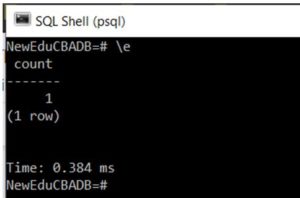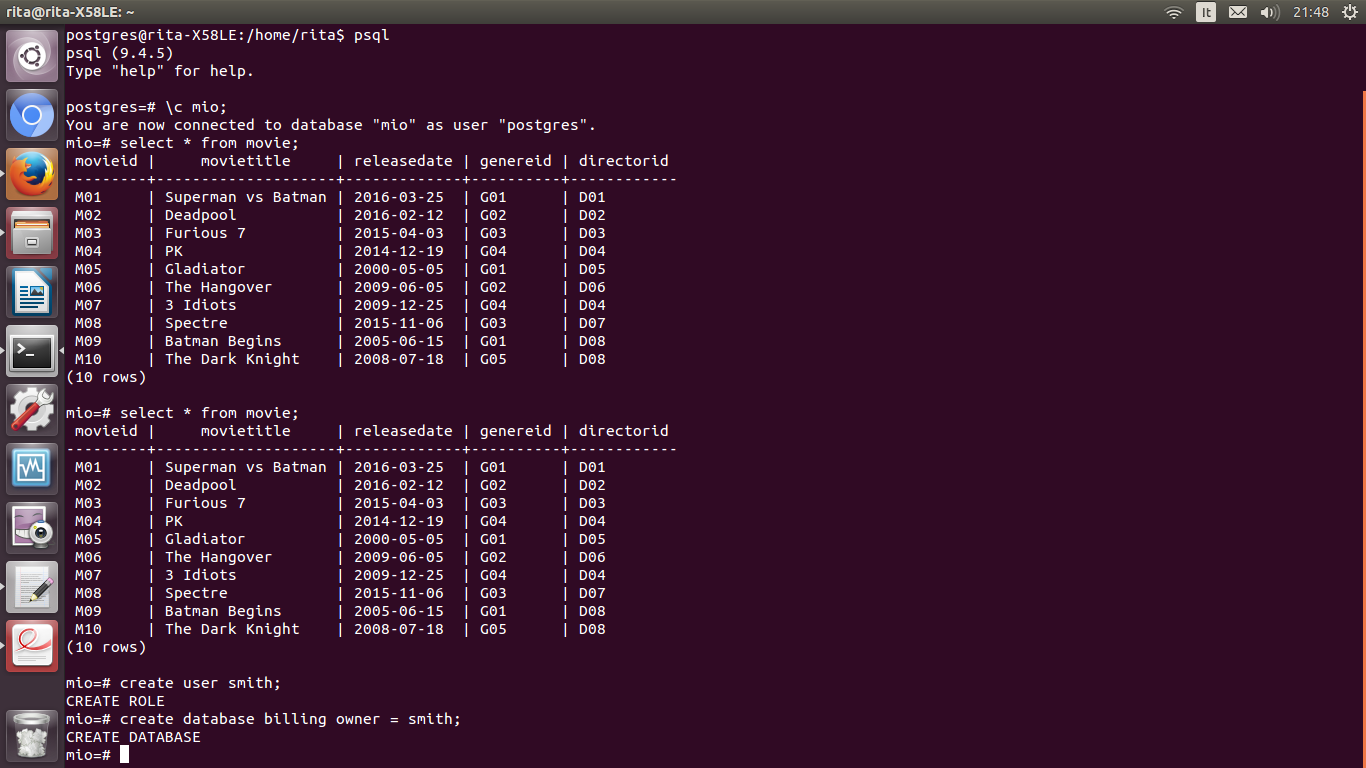
#POSTGRESQL CREATE DATABASE FROM COMMAND LINE FULL#
Optional parameters can be written in any order, not only the order illustrated above.ĬREATE DATABASE cannot be executed inside a transaction block.Įrrors along the line of “ could not initialize database directory” are most likely related to insufficient permissions on the data directory, a full disk, or other file system problems.

If true, then this database can be cloned by any user with CREATEDB privileges if false (the default), then only superusers or the owner of the database can clone it. How many concurrent connections can be made to this database. The default is true, allowing connections (except as restricted by other mechanisms, such as GRANT/ REVOKE CONNECT). If false then no one can connect to this database. See CREATE TABLESPACE for more information. This tablespace will be the default tablespace used for objects created in this database. The name of the tablespace that will be associated with the new database, or DEFAULT to use the template database's tablespace. The default is to use the character classification of the template database. This affects the categorization of characters, e.g., lower, upper and digit. lc_ctypeĬharacter classification ( LC_CTYPE) to use in the new database. The default is to use the collation order of the template database.

This affects the sort order applied to strings, e.g., in queries with ORDER BY, as well as the order used in indexes on text columns. lc_collateĬollation order ( LC_COLLATE) to use in the new database. The character sets supported by the PostgreSQL server are described in Section 23.3.1. Specify a string constant (e.g., 'SQL_ASCII'), or an integer encoding number, or DEFAULT to use the default encoding (namely, the encoding of the template database). encodingĬharacter set encoding to use in the new database. The name of the template from which to create the new database, or DEFAULT to use the default template ( template1).

To create a database owned by another role, you must be a direct or indirect member of that role, or be a superuser. The role name of the user who will own the new database, or DEFAULT to use the default (namely, the user executing the command). module postgres './core/host/container-app-service.The name of a database to create. infra/main.bicep module file with the following declaration. infra/core/host/container-app-service.bicep module file with the following content. You can run the command to view the initialization logs of the new postgres service.Ĭreate a. The output postgresLogs command outputs a CLI command you can run to view PostgreSQL logs after deployment. az deployment group create -g $RESOURCE_GROUP \ To deploy the bicep template, run az deployment group create. resource appEnvironment = -follow -tail 30' azd init \Īdd the following values to your postgres-dev.bicep file. Use the values to initialize a minimal azd template. az deployment group create -g $RESOURCE_GROUP \ĭefine your initial variables. Param pgsqlCliAppName string = 'psql-cloud-cli-app'Īs you deploy the bicep template at any stage, you can use the az deployment group create command. Param appEnvironmentName string = 'aca-env'

Param location string = resourceGroup().location RESOURCE_GROUP="postgres-dev"įor Bicep, start by creating a file called postgres-dev.bicep, then add parameters with the following default values. The following variables allow you to use the CLI to deploy the Bicep template.


 0 kommentar(er)
0 kommentar(er)
